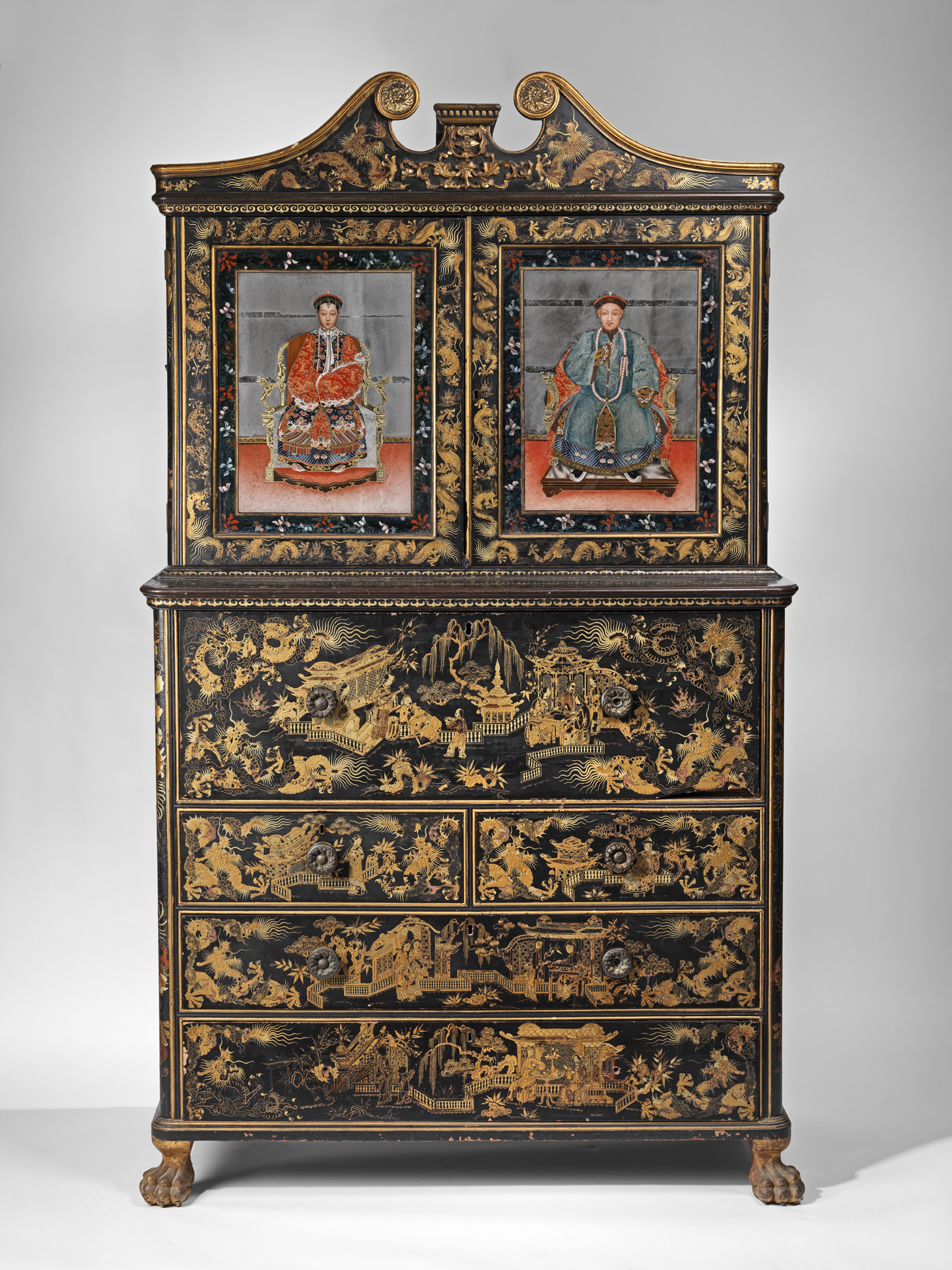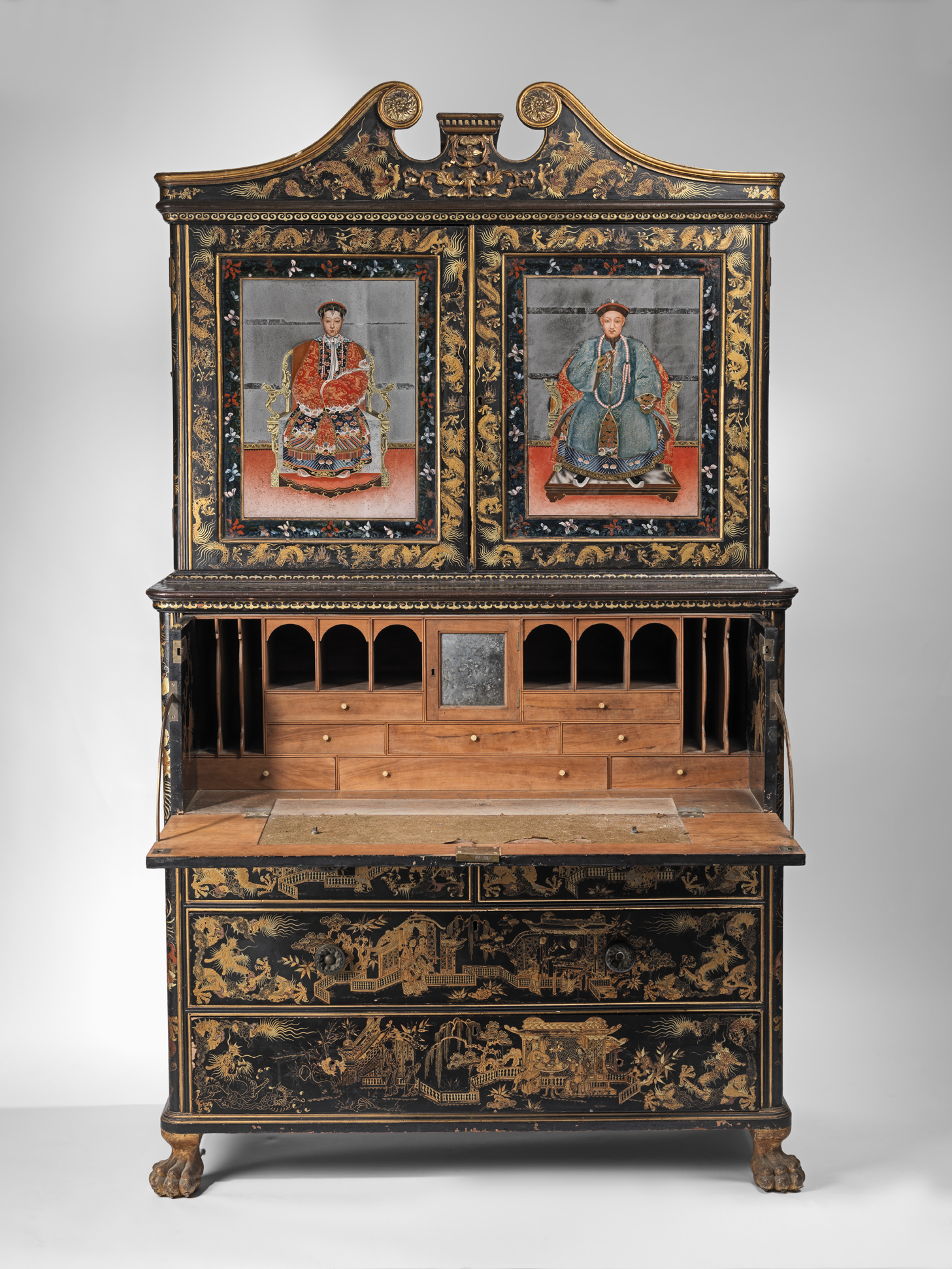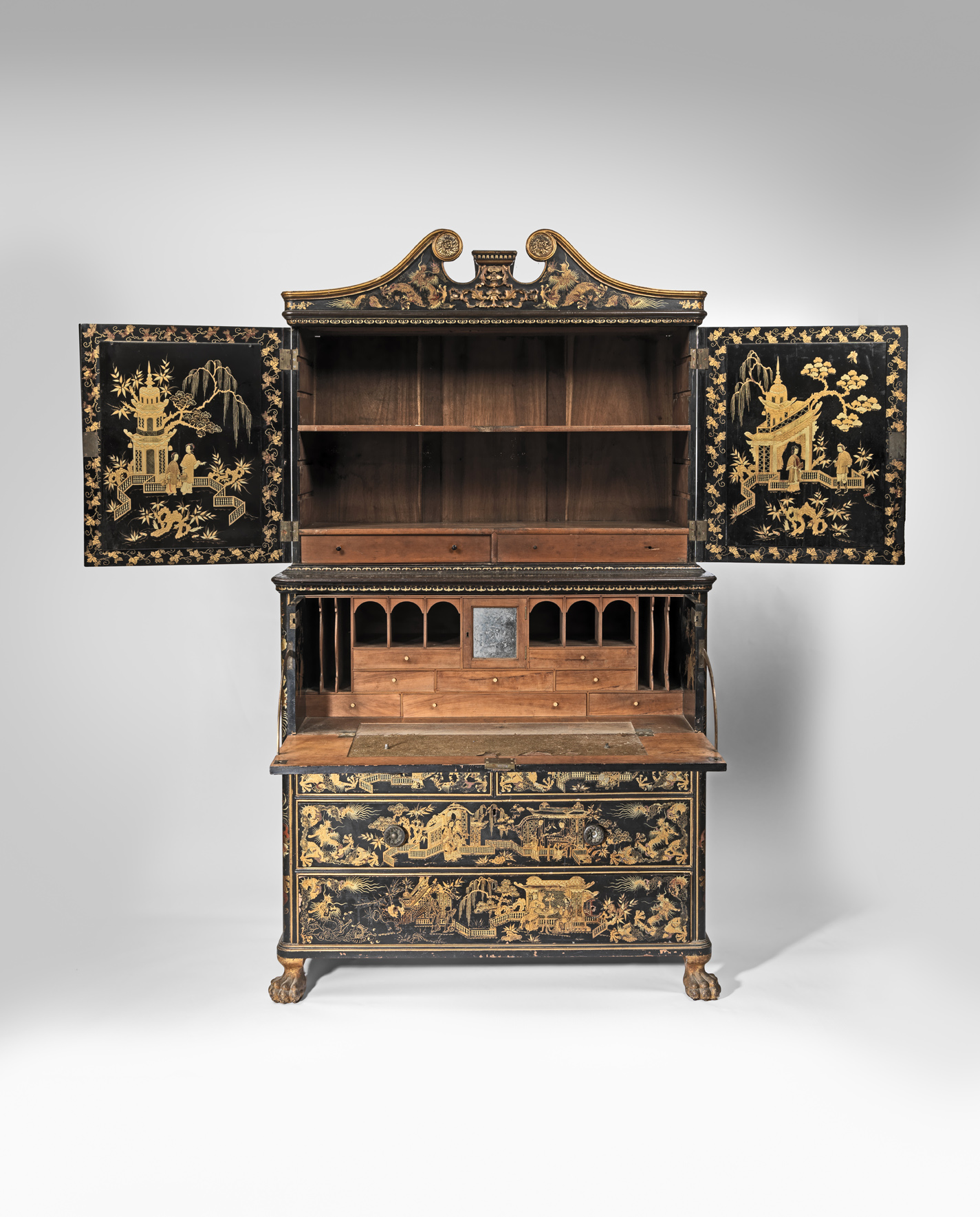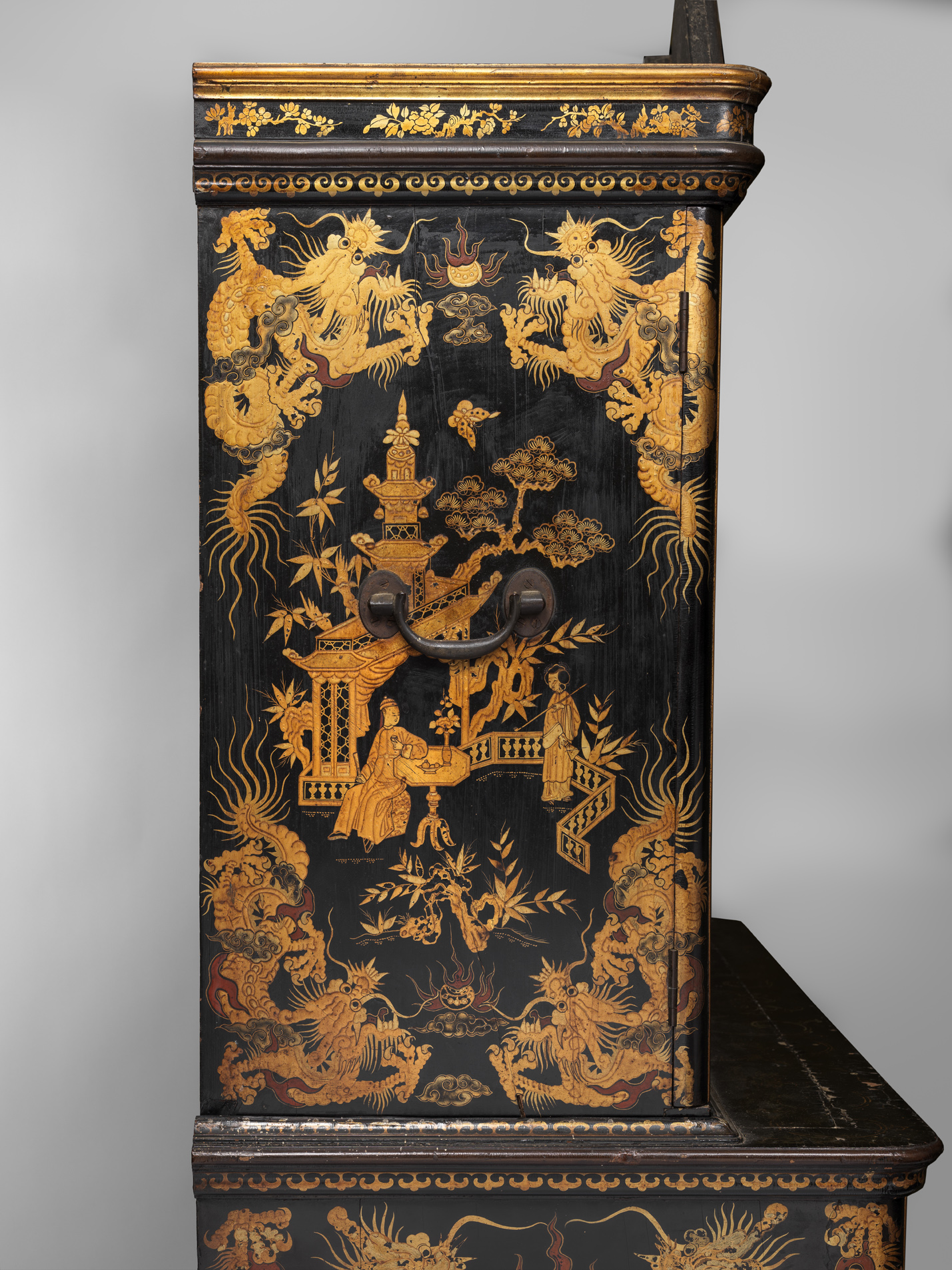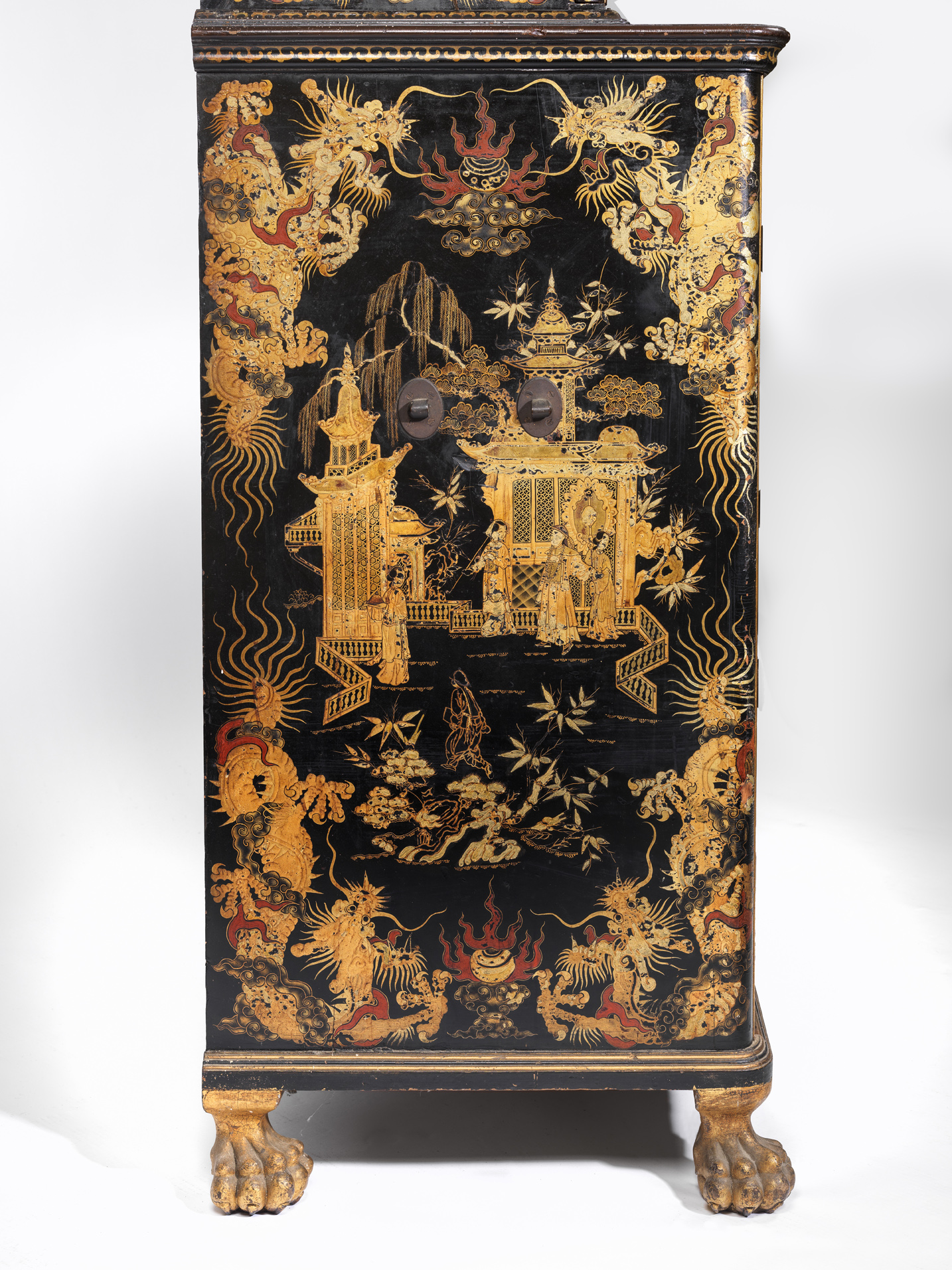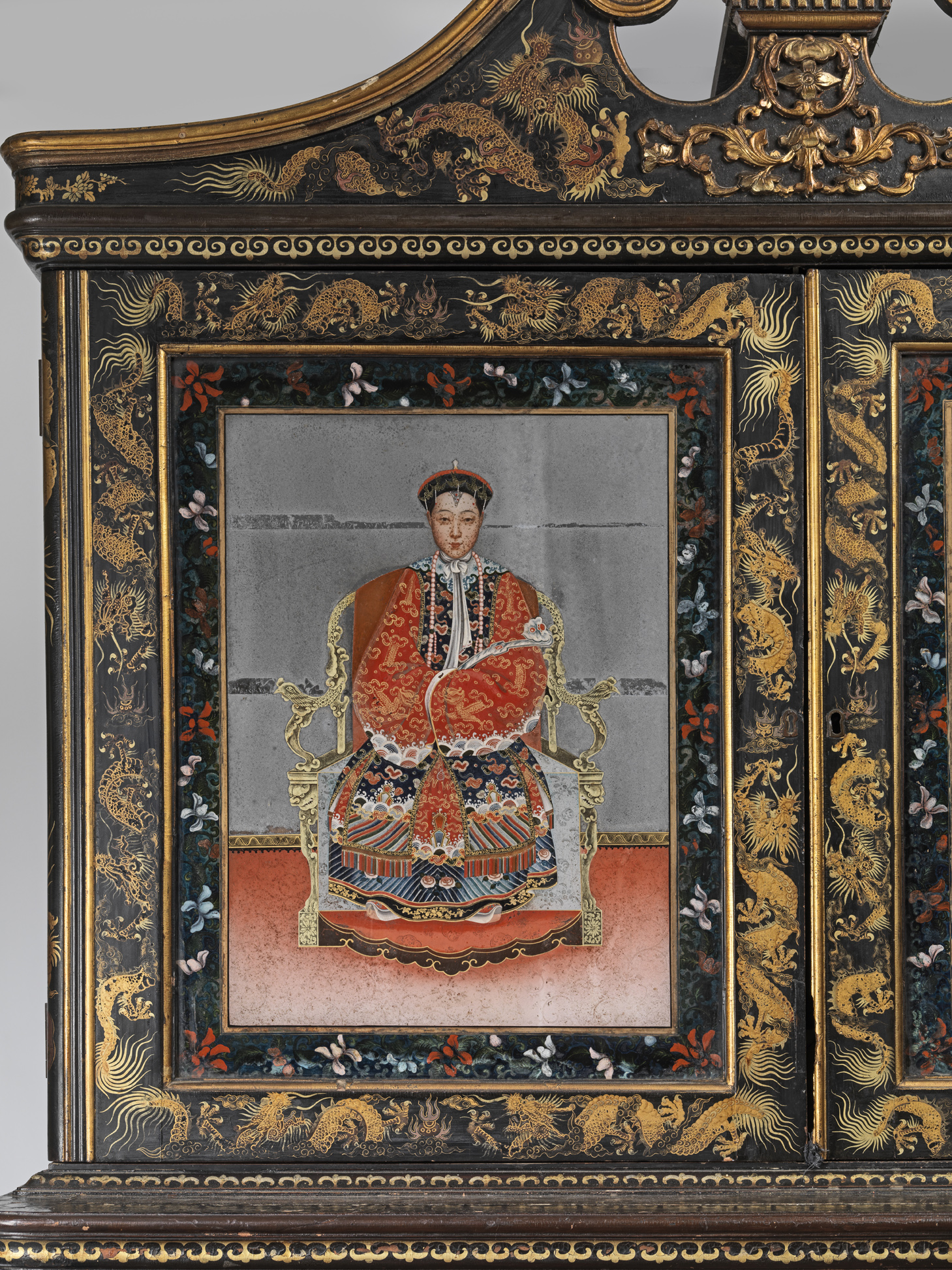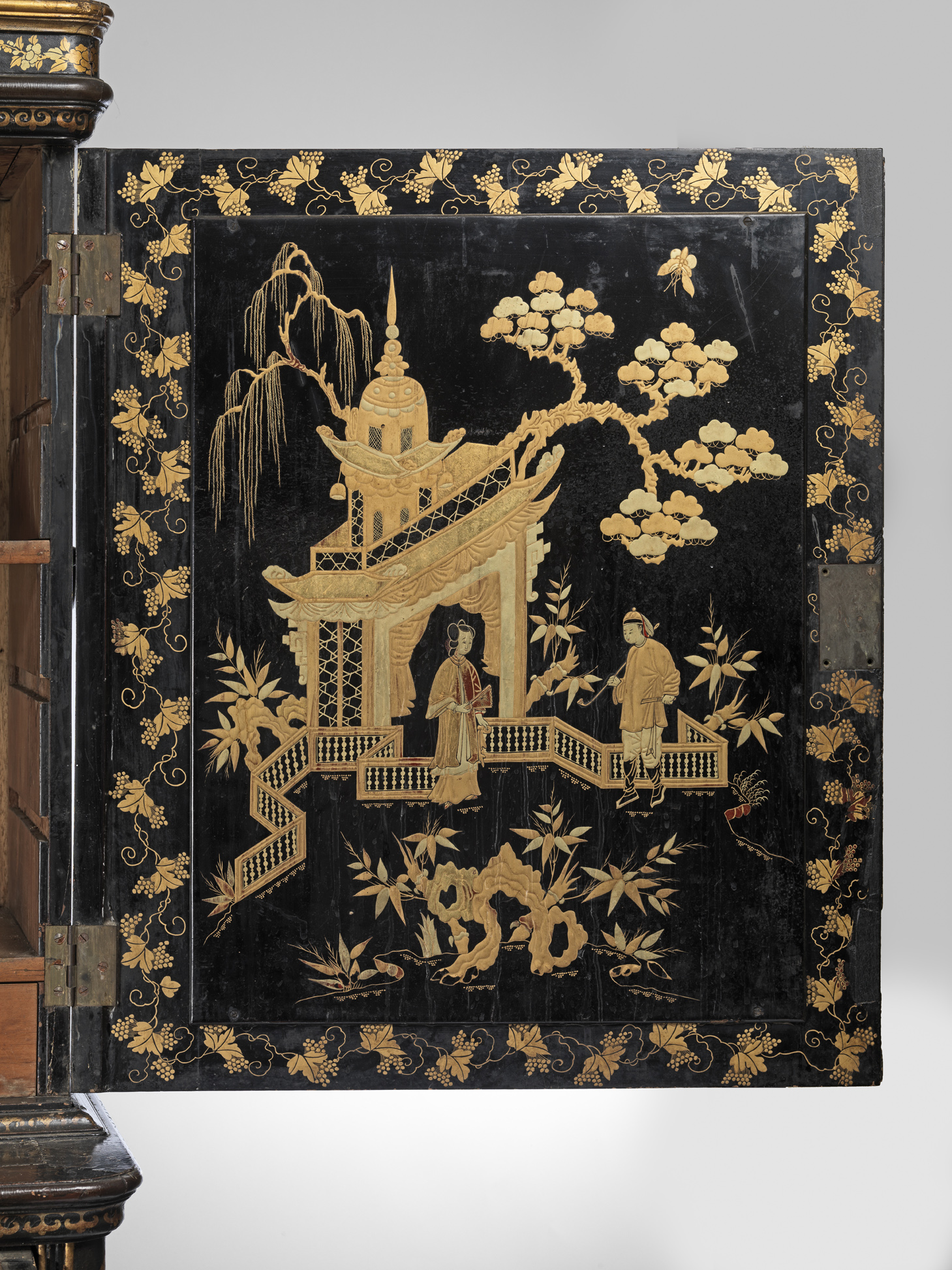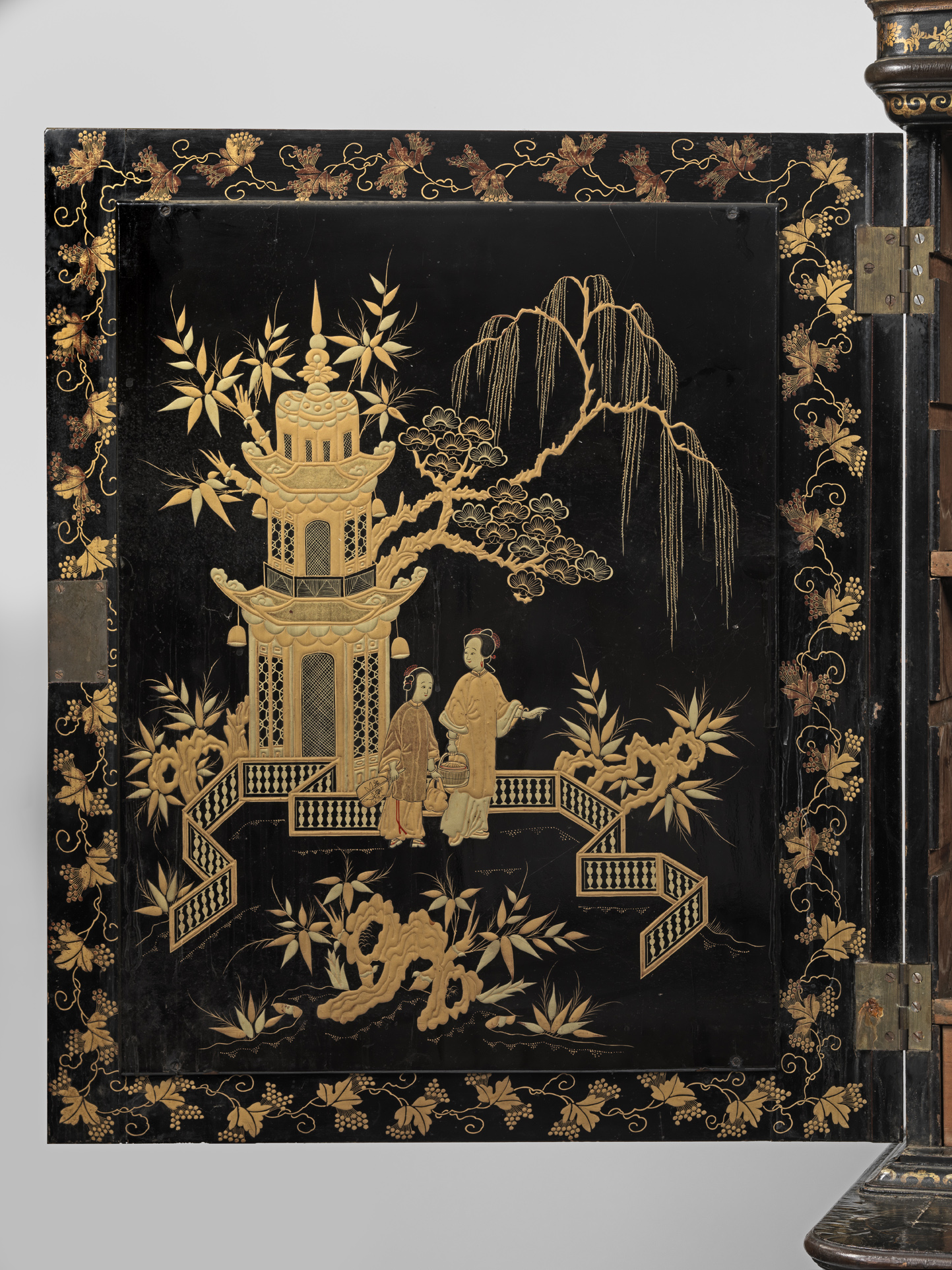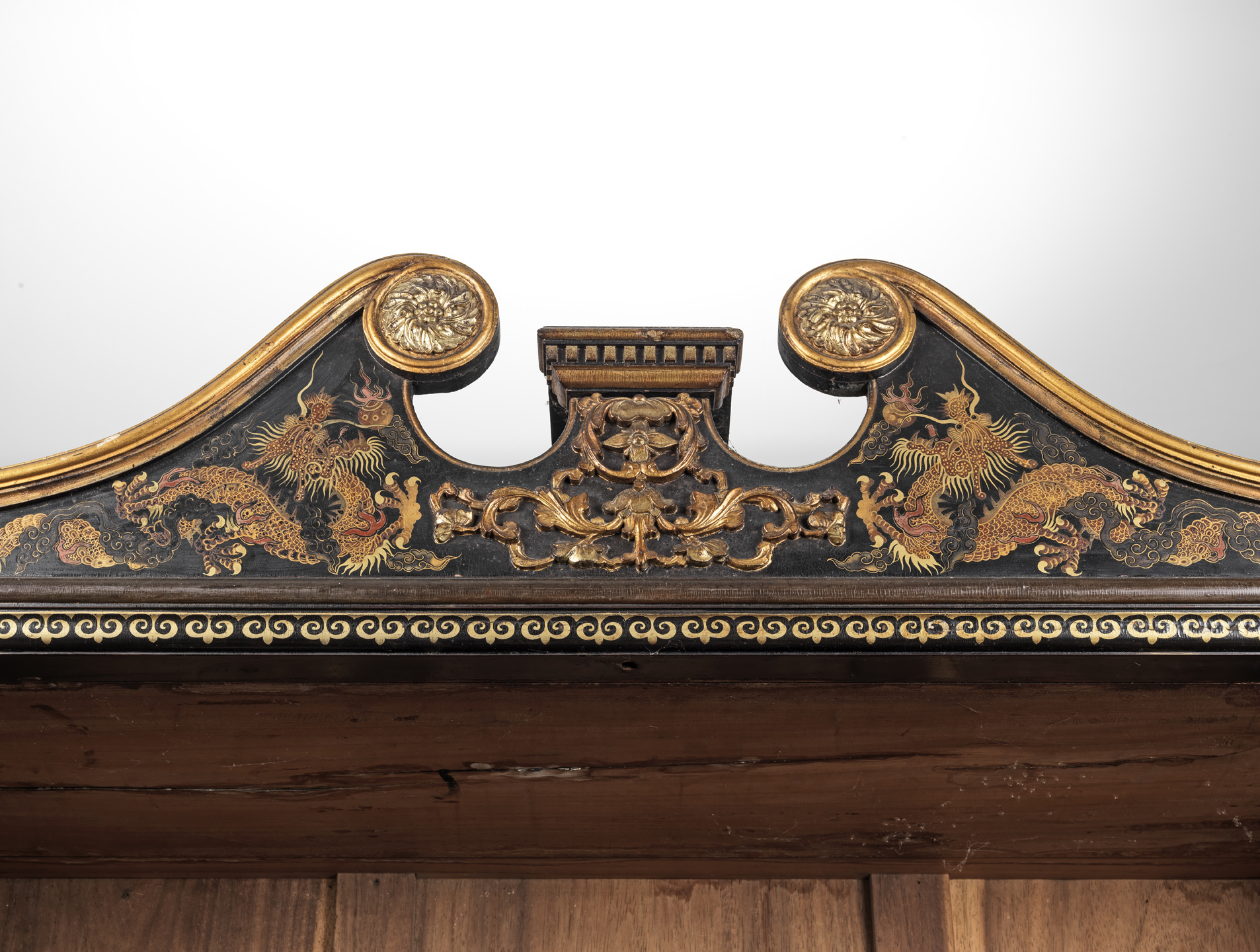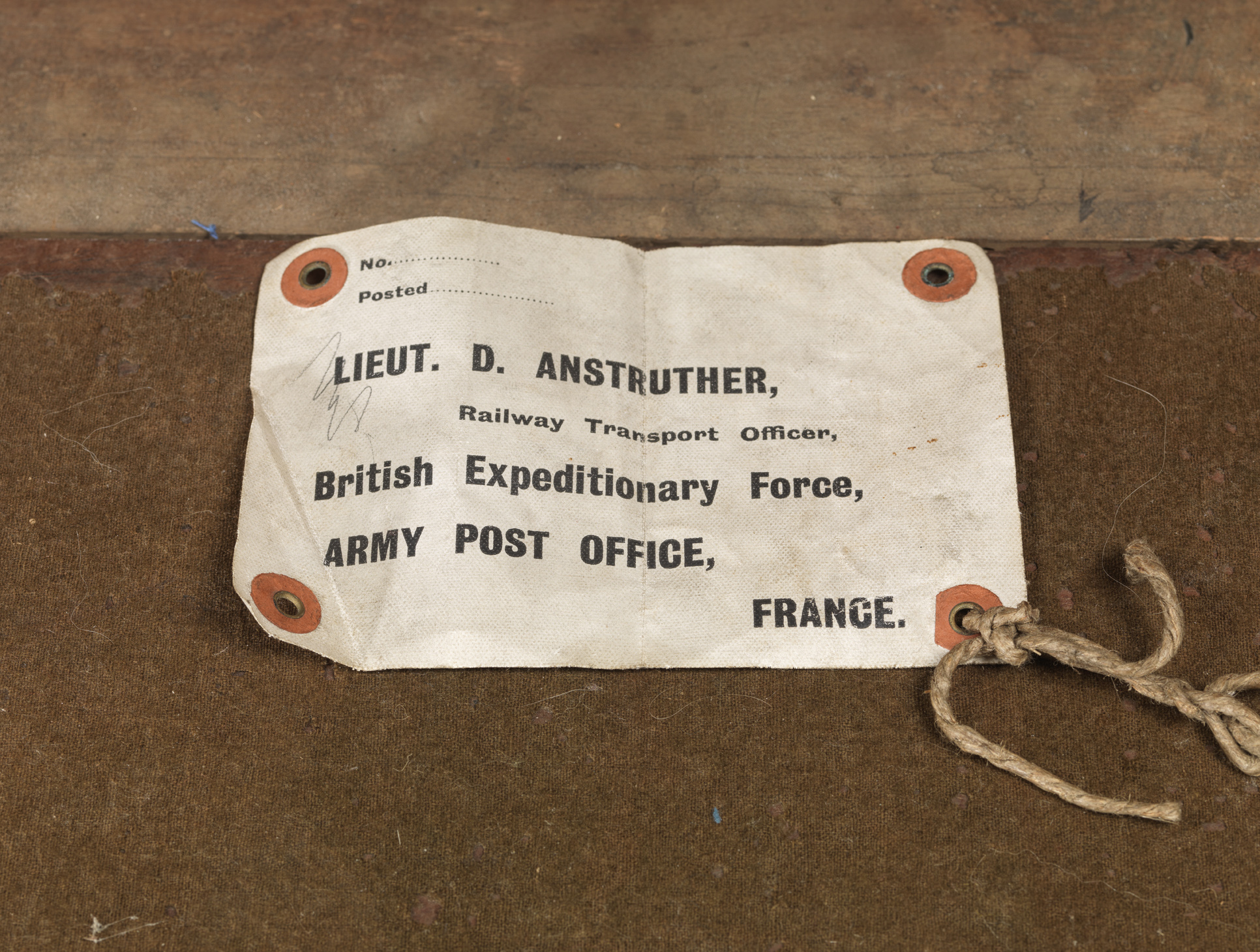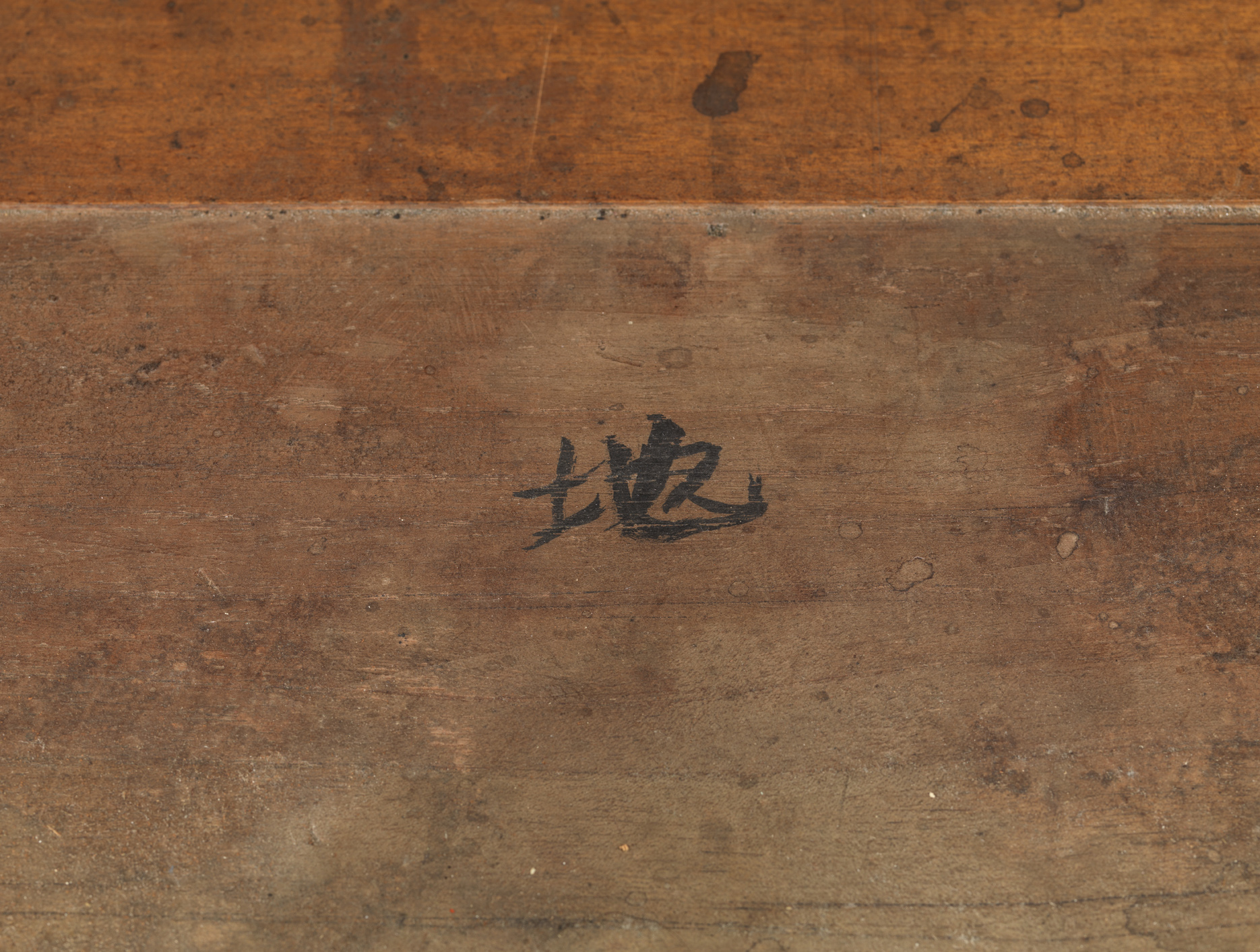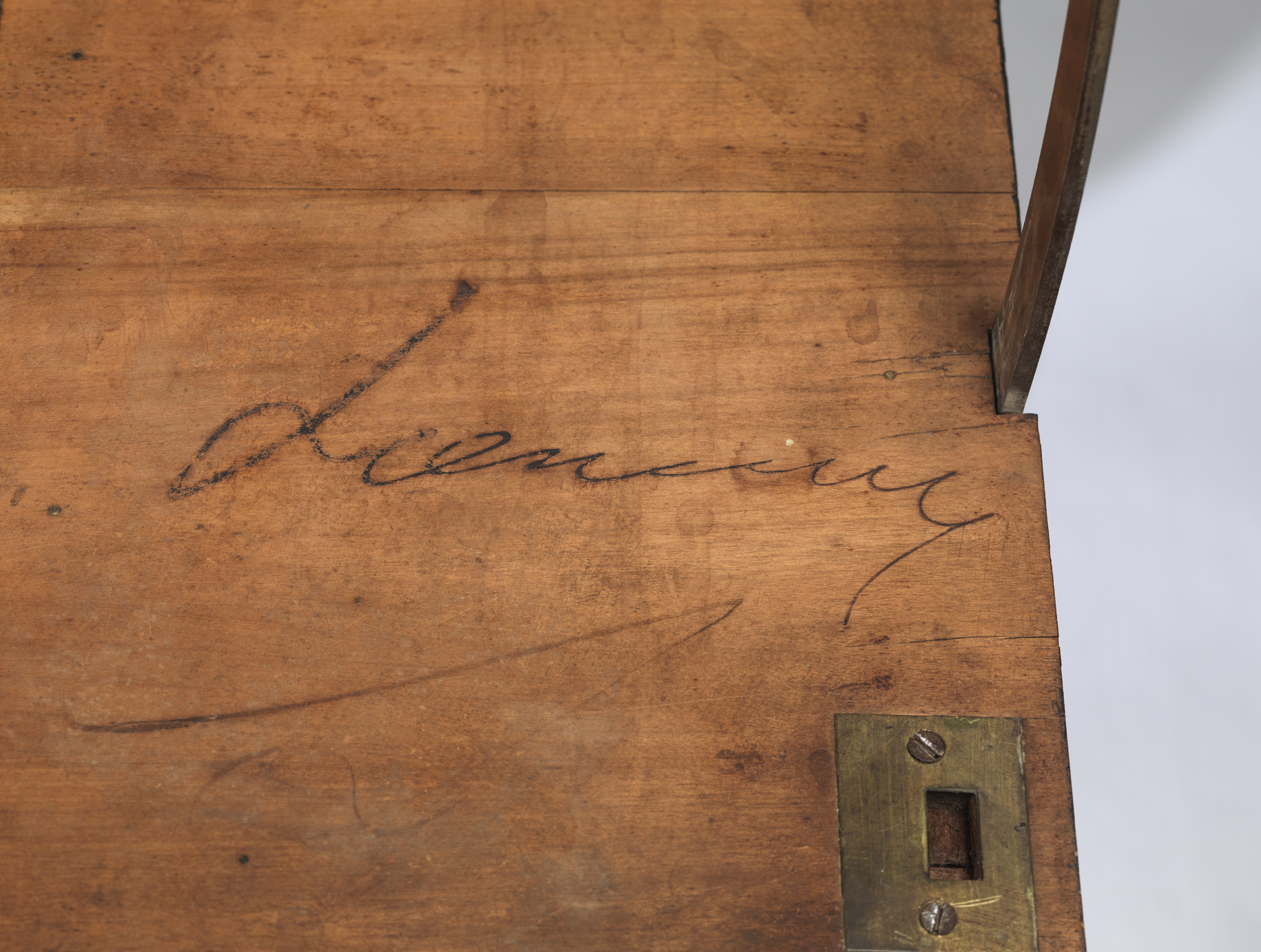A spectacular export lacquer secretaire cabinet, the upper section with a swan neck pediment with carved and gilded rosettes and a central rest for a cartouche, now lacking. Decorated on the black ground in gilt and colours with confronted four claw dragons pursuing flaming pearls on either side of a relief carved acanthus scroll.
Beneath this pediment is a two-door cabinet with inset mirror glass ancestor portrait paintings, a male figure to the right door seated in a horseshoe armchair with unusual lion (?) arm terminals and cabriole legs with lion heads and paw feet, he wears a blue surcoat with stylised dragon roundels a kesa or embroidered robe beneath with his right hand he touches the end of his beard. The female figure to the left door is seated in an elaborate horseshoe armchair with bird arm terminals and slender cabriole legs with lion heads and paw feet resting on square blocks that appear to be part of the lobed footrest. She wears a red coat decorated with gold dragons amidst clouds and a kesa or embroidered tunic decorated with clouds (?) above rocks and breaking waves. She wears a spotted veil and an unusual almost Western style scarf and holds a jewelled ruyi sceptre. Both mirror paintings are contained within an inner border of naturalistic flowers in reds, whites and blues, with an outer frame of gilt four claw dragons confronted to each side with flaming pearls, their bushy tails forming the corner spandrels.
The doors to the uppers section open to reveal landscape scenes with mythical pavilions with grand balustrades and ornamental rocks bordered by leafy grapevine. The left door with two female figures holding a basket and a fan respectively, the right with a female figure holding a fan framed in a curtained doorway seemingly in conversation with a male figure holding a pipe. The interior with a single central shelf above two long drawers in camphor with the back boards also in camphor. The sides are decorated, to the left side, with a male figure seated on a drum stool with a closed fan in his right hand holding a teacup in his left, his arm resting on an octagonal tripod table as he looks over at a female figure holding a pipe with a similar balustrade and ornamental rockwork, each corner with a four-claw dragon forming the spandrel confronting a flaming pearl. Unusually the dragon decoration to the front continues into the curved edge of the door. The other side is similarly decorated both mounted with stop-bail handles.
The lower section with a deep secretaire drawer decorated in gilt and colours with a landscape scene with a male figure seated in a folding yoke back armchair being offered tea by a servant and accompanied by two female figures one seated on a drum stool the other standing by another drum stool playing a biwa. Three other female figures, seated on drum stools are playing weiqi, all surrounded by fanciful pavilions and a low balustrade. Each corner spandrel with a four clawed dragon and a flaming pearl. Beneath the secretaire drawer are two short drawers, the left with a female figure with a long pipe (?) bracketed by dragons, the right with a male figure seated in a yoke back armchair, similarly bracketed by dragons. The two long drawers beneath with two ladies with a child and two other ladies one seated at a table playing a qin all within a landscape of pavilions and balustrades with dragons to the lower left and right hand corners, the second drawer with a similar design of a female figure with a teapot accompanied by a boy servant and a male and female figure drinking tea whilst seated on drum stools at a tripod table, again with dragons to the lower left and right hand corners. Each of these drawers with cast brass pull handles of rosette design reflecting the rosettes of the swan neck pediment, the lowest drawer lacking handles.
The sides are decorated, to the left side with a male dignitary with three female attendants and a servant in the foreground carrying a gameboard (?) within a fanciful landscape of pavilions with a balustraded balcony, each corner with a four-claw dragon forming the spandrel confronting a flaming pearl, again with the dragon decoration to the front continues into the curved edge framing the drawers. The other side is similarly decorated both mounted with stop-bail handles, lacking to the left and right side. The interior of the secretaire with a central mirrored door flanked by pigeonholes and numerous drawers with serpentine vertical divisions for paper. The writing surface now lacking its baize but exposing an ink Chinese character an unread ink inscription to the right-hand side. The whole supported on four carved and gilded paw feet.
All of the drawer locks appear to be of Chinese manufacture.
This cabinet shows close affinities with two black and gilt bonheur de jour, one in the collection of the Rhode Island Historical Society (illustrated in The Decorative Arts of The China Trade, 1991,by Carl Crossman, plate 150) where he ascribes it a circa 1825 date the other from the collection of Her Majesty, the Queen on loan to the Royal Pavilion, Brighton (illustrated in The China Trade, 1600 – 1860, 1986by Patrick Conner, pate 171 where it is ascribed a 1825 – 1850 date by Conner. The decoration on the inside of the doors of the Brighton Pavilion cabinet compares well with the inside decoration of the doors of the cabinet discussed here but the swan neck cornice appears to me to be weaker in design than that here. The Rhode Island Historical Society bonheur de jour is raised on pineapple feet which Crossman argues predate the paw feet, at least in Chinese furniture made for export to the American market.
Possibly a more comparative piece is a games box on stand from the Nordiska Museet illustrated by Jan Wirgin in Fran Kina till Europa, 1998, plate 293 which exhibits the same paw feet and dragon decoration to curved edge of the box, and which is ascribed a circa 1840-1860 date.
There are ink Chinese characters to the back of both long drawers, the underside of one of the short drawers and the top of the writing surface where the baize would have covered it.
Chinese export, Canton, circa 1840
Height: 213.4 cm / 84 in
Depth (lower section): 55.9 cm / 22 in – Depth (upper section): 36.8 cm / 14 1/2 in
Width: 122 cm / 48 in
£ P O A
